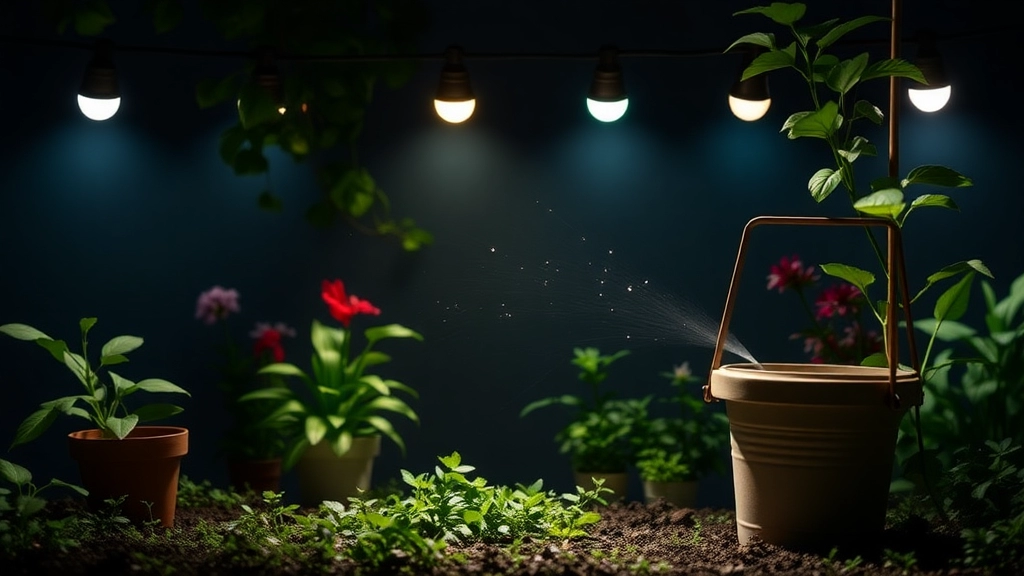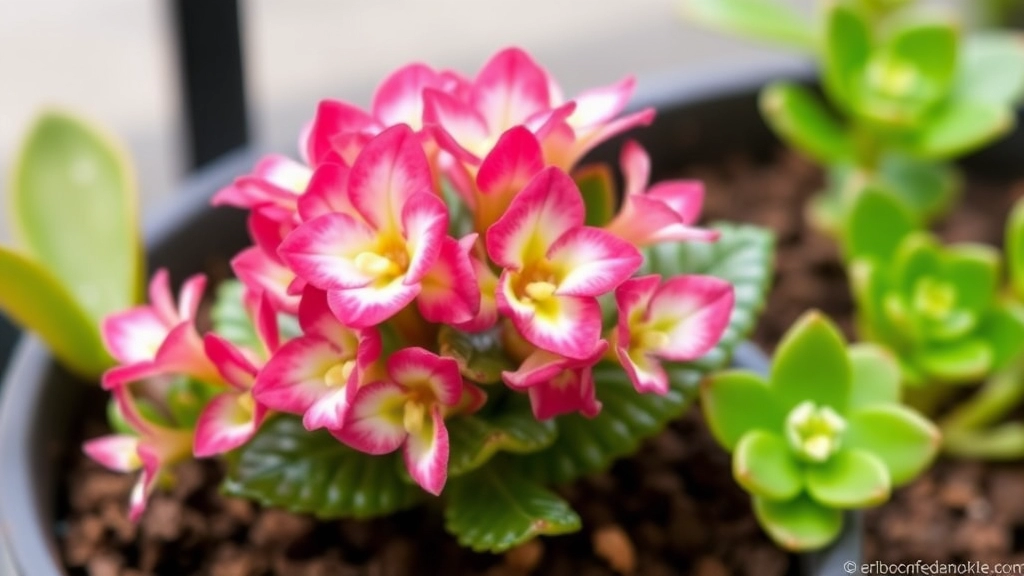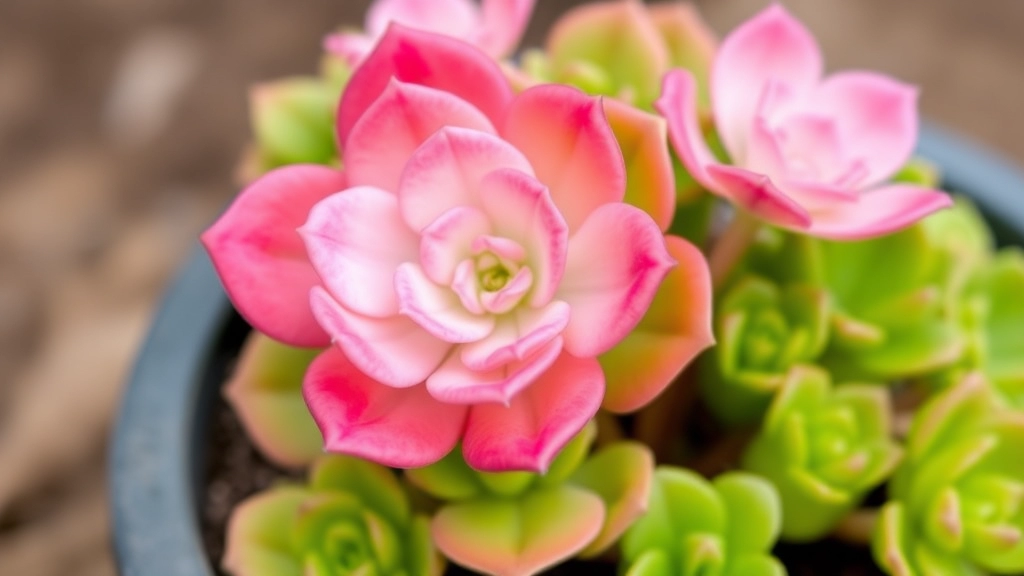Scalloped Kalanchoe Succulent Care Guide
If you’re looking to add a unique and vibrant touch to your plant collection, the Scalloped Kalanchoe Succulent, also known as Kalanchoe Fedtschenkoi or Lavender Scallops, is a perfect choice. Its blue-green, scalloped leaves that blush under bright sunlight make it a standout in any home decor or garden setup. In this guide, I’ll share all you need to know to care for, propagate, and maintain this stunning, drought-tolerant succulent.
Light and Watering Requirements
First things first, understanding the light and watering requirements is crucial for the health of your Scalloped Kalanchoe Succulent. This plant thrives in bright, indirect light and requires minimal watering, making it an ideal choice for both beginners and experienced gardeners.
What You’ll Learn
- Best soil and potting practices
- Effective propagation methods
- How to prevent common pests from affecting your plant
How to Care for Scalloped Kalanchoe Succulents
Caring for Scalloped Kalanchoe succulents can seem daunting, but with the right guidance, it becomes a rewarding experience.
These charming plants, known for their unique scalloped leaves, require specific attention to thrive.
Key Care Tips:
- Light: Kalanchoe succulents prefer bright, indirect sunlight. Too much direct sun can scorch their leaves. For more details, you can check out our ultimate guide on Kalanchoe care.
- Watering: Allow the soil to dry out completely between waterings. Overwatering is a common mistake that can lead to root rot. Follow our best practices for watering Kalanchoe.
- Temperature: They thrive in temperatures between 15°C to 27°C. Avoid exposing them to frost.
- Humidity: Kalanchoe does well in low humidity, making it an excellent choice for indoor environments.
II. Light and Watering Requirements

So, you’ve got your Scalloped Kalanchoe and you’re wondering how to keep it thriving?
Let’s dive into the light and watering needs that will keep your plant happy.
Light Requirements
Kalanchoe Fedtschenkoi loves sunlight, but not too much of it!
Here’s what you need to know:
- Bright, Indirect Light: Place it near a window where it can soak up bright, indirect light.
- Avoid Harsh Sun: Direct sunlight can scorch those lovely leaves.
- Ideal Location: A spot that gets morning sun and afternoon shade works wonders.
Watering Guidelines
Now, let’s talk watering.
Overwatering is a common mistake, so here’s how to do it right:
- Let It Dry Out: Always let the top inch of soil dry out before watering again.
- Deep Soaks: When you do water, give it a good soak until water drains from the bottom.
- Seasonal Changes: In winter, reduce watering as the plant goes dormant.
Quick Tips
- Signs of Underwatering: If the leaves start drooping, it’s time for a drink!
- Signs of Overwatering: Yellowing leaves? That’s a red flag!
Keeping an eye on these light and watering requirements will set you on the right path for a healthy Kalanchoe.
When caring for Scalloped Kalanchoe, one of the most common concerns is selecting the right soil and potting practices.
Choosing the right soil is crucial for the health of your succulent.
### Ideal Soil Mix
– **Well-Draining Soil**: Kalanchoe Fedtschenkoi thrives in a well-draining mix. Look for a [cactus or succulent potting mix](https://planthq.org/how-to-care-for-a-kalanchoe-succulent-expert-tips/).
– **Additives**: Consider adding perlite or coarse sand to improve drainage. This prevents root rot, a common issue for succulents.
– **pH Level**: Aim for a slightly acidic to neutral pH (around 6.0 to 7.0) for optimal growth.
### Pot Selection
– **Drainage Holes**: Always choose pots with drainage holes. This allows excess water to escape and keeps roots dry.
– **Material Matters**: Terracotta pots are excellent as they absorb moisture, helping to prevent overwatering. However, plastic pots can also work if they have adequate drainage.
– **Size**: Select a pot that is slightly larger than the root ball of your Kalanchoe. This gives the roots room to grow without being too spacious, which can retain excess moisture.
### Repotting Tips
– **Frequency**: Repot every 1-2 years or when the plant outgrows its pot. This refreshes the soil and provides new nutrients.
– **Timing**: The best time to repot is during the growing season, typically in spring.
– **Technique**: Gently remove the plant from its old pot, shake off excess soil, and inspect the roots for any signs of rot. For more detailed guidance, refer to this [complete guide to repotting Kalanchoe](https://planthq.org/how-to-propagate-kalanchoe-blossfeldiana-cuttings/).
Propagation Methods for Kalanchoe Fedtschenkoi

After ensuring your Scalloped Kalanchoe is thriving, you might wonder how to multiply your plant. Propagation is an exciting and rewarding process that allows you to share the beauty of Kalanchoe Fedtschenkoi with friends or expand your collection.
1. Leaf Cuttings
One of the most common methods is through leaf cuttings. Here’s how to do it:
- Select a healthy leaf: Look for a mature, plump leaf on your plant.
- Cut the leaf: Use a clean, sharp knife to make a clean cut.
- Let it callous: Place the leaf in a dry area for a few days to allow the cut end to callous over. This helps prevent rot.
- Plant the leaf: Once calloused, place it on top of well-draining soil. You can lightly press it down, but don’t bury it.
- Water sparingly: Mist the soil lightly, ensuring it remains slightly moist but not soggy.
2. Offsets
Kalanchoe Fedtschenkoi often produces offsets, which are small plants that grow at the base of the parent plant. To propagate using offsets:
- Identify offsets: Look for small plants that have developed roots.
- Remove carefully: Gently twist or cut the offset away from the parent plant.
- Replant: Place the offset in its own pot with suitable soil.
- Water lightly: Just like with leaf cuttings, keep the soil slightly moist.
3. Stem Cuttings
Stem cuttings are another effective method. Here’s a step-by-step guide:
- Choose a healthy stem: Select a stem with several leaves.
- Cut the stem: Make a clean cut just below a leaf node.
- Allow to dry: Let the cut end dry for a few days.
- Plant the stem: Insert the cut end into well-draining soil.
- Water sparingly: Mist the soil and keep it lightly moist.
Each of these methods can yield successful results, allowing you to enjoy multiple Kalanchoe plants in no time.
As you nurture your Scalloped Kalanchoe, it’s essential to stay vigilant against common pests that can jeopardise its health.
### Recognising Common Pests
Kalanchoe Fedtschenkoi can attract several pests, including:
– **Mealybugs**: These small, white, cotton-like insects often cluster in leaf joints.
– **Aphids**: Tiny green or black bugs that suck sap from the plant.
– **Spider Mites**: These are tiny and often go unnoticed until you see fine webbing on leaves.
– **Scale Insects**: These pests appear as small, brownish bumps on stems and leaves.
### Prevention Strategies
To keep your Scalloped Kalanchoe thriving, consider the following prevention tips:
– **Regular Inspections**: Check your plants weekly for signs of pests. Early detection is key.
– **Maintain Cleanliness**: Keep the surrounding area clean to deter pests. Remove fallen leaves and debris.
– **Proper Air Circulation**: Ensure your plant has enough space for air to circulate, which helps prevent infestations.
– **Watering Practices**: Avoid overwatering, as damp conditions can attract pests.
– **Natural Predators**: Introduce beneficial insects like ladybugs to help control pest populations.
### Treatment Options
If you do encounter pests, here are some effective treatments:
– **Neem Oil**: A natural pesticide that works well against various pests.
– **Insecticidal Soap**: Effective for soft-bodied insects like aphids and mealybugs.
– **Manual Removal**: For small infestations, you can wipe pests off with a damp cloth or cotton swab.
For more specific care tips, check out our [ultimate guide to Kalanchoe Blossfeldiana hybrid care](https://planthq.org/ultimate-guide-to-kalanchoe-blossfeldiana-hybrid-care/) and learn how to [grow and care for Kalanchoe Pinnata](https://planthq.org/how-to-grow-and-care-for-kalanchoe-pinnata-tips-and-benefits/).
FAQs on Scalloped Kalanchoe Succulent Care and Propagation
What kind of light does a Scalloped Kalanchoe need?
The Scalloped Kalanchoe thrives in bright, indirect light. It is best to place it near a window where it can get morning sun and afternoon shade. Avoid exposing it to direct sunlight as it can scorch the leaves.
How often should I water my Scalloped Kalanchoe?
Watering should be done carefully to avoid overwatering. Let the top inch of soil dry out before watering again. When you do water, give it a deep soak until water drains from the bottom. In winter, reduce watering as the plant goes dormant.
What are the signs of underwatering and overwatering?
If the leaves start drooping, it is a sign of underwatering and your plant needs a drink. On the other hand, yellowing leaves indicate overwatering, which is a red flag.
How can I propagate my Scalloped Kalanchoe?
There are three common methods for propagating Kalanchoe Fedtschenkoi: leaf cuttings, offsets, and stem cuttings.
Leaf Cuttings
- Select a healthy, mature leaf.
- Cut the leaf with a clean, sharp knife and let it callous over for a few days.
- Place the calloused leaf on well-draining soil and mist lightly.
Offsets
- Identify small plants (offsets) growing at the base of the parent plant.
- Carefully remove the offset and replant it in its own pot with suitable soil.
- Water lightly to keep the soil slightly moist.
Stem Cuttings
- Choose a healthy stem with several leaves.
- Make a clean cut just below a leaf node and let it dry for a few days.
- Insert the cut end into well-draining soil and mist lightly.
What should I do if my Scalloped Kalanchoe’s leaves are yellowing?
Yellowing leaves are often a sign of overwatering. Check the soil moisture and ensure that you are letting the top inch of soil dry out before watering again. Adjust your watering schedule accordingly.
Can I place my Scalloped Kalanchoe outside?
Yes, you can place your Scalloped Kalanchoe outside, but it should be in a location that receives morning sun and afternoon shade. Be cautious of direct sunlight, which can scorch the leaves.
How do I know if my Scalloped Kalanchoe needs more light?
If your plant’s leaves start to stretch or become pale, it may be an indication that it is not receiving enough light. Move it to a brighter location with indirect sunlight.
References
-
How to Grow and Care for Scalloped Kalanchoe
-
Kalanchoe Fedtschenkoi Care: Growing Lavender Scallops
-
Kalanchoe Fedtschenkoi Care Guide
